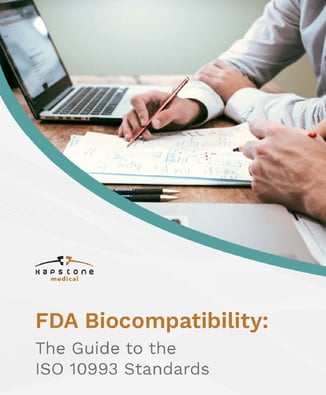The breakthrough technologies and innovations behind medical devices rapidly advance the quality of patient care. However, bringing a medical device to market is a time-consuming and often expensive process for medical OEMs.
Along with the complexities inherent in taking a medical device from idea to viable concept is the mire of regulatory compliance. Governing authorities and requirements vary internationally, and technicalities are subject to change — making the pursuit of compliance a daunting task.
Manufacturers that partner with a proven medical device consultant free themselves of committing excessive time and resources to compliance. Regulatory experts practiced in navigating the nuances of requirements and submissions efficiently guide compliance processes, allowing OEMs to focus on their core business instead.
Navigating the regulatory landscape
The United States Food and Drug Administration (US FDA) and the European Competent Authorities and Notified Bodies are responsible for governing the authorization, marketing, and post-market compliance of medical devices in the United States and European Union, respectively.
While the regulatory authorities share a common goal, each has its own set of regulations that manufacturers must follow to achieve medical device compliance. The differences and — in some instances, the similarities — between the US FDA regulations and European Union Medical Device Regulations (EU MDR) can trip up OEMs.
To illustrate the point, here’s a brief comparison of how the US FDA regulations and EU MDR handle medical device classification, pre-market approval, and Unique Device Identification (UDI).
US FDA |
MDR |
|
Device Classification |
Three categories (Class I, II, or III) with devices classified in progressive level of risk — I being lowest and III highest |
Four categories (I, IIa, IIb, or III) with devices classified based on potential risk of the device including duration of use and invasiveness |
Pre-market Authorization |
|
All medical devices are required to carry the Conformité Européene (CE) marking, which looks like: CE marking is either through self-certification for Class I devices, or issued by a notified body via a conformity assessment procedure |
Unique Device Identification (UDI) |
Global Unique Device Identification Database (GUDID):
|
European Database on Medical Devices (EUDAMED):
|
Even in the oversimplification of this comparison, it’s easy to see how a medical OEM with limited experience with the agencies might confuse themselves and feel overwhelmed at the differences.
Post-market surveillance and quality management
Medical device compliance extends beyond initial approvals. Regulatory agencies require post-market surveillance and quality management to confirm the device is performing as anticipated. Depending on the governing authority, post-market surveillance includes:
- Adverse event reporting
- Post-approval studies related to some US devices (performed as PMCF in the EU)
- UDI traceability data
- Summary of Safety and Clinical Performance reporting obligations/database (MDR only)
Risk mitigation and quality management are essential components of compliance and, more broadly, consistent patient safety. Post-market surveillance follow-up is crucial. Gathering and reporting data falls to medical device manufacturers. This added responsibility could strain resources if teams are already spread thin, and might open the door to jeopardizing compliance if data is incomplete or inaccurate.
The Benefits of Partnering with a Medical Device Consultant
The nature of medical devices necessitates strict regulatory requirements and compliance standards. There is a lot at stake for OEMs, healthcare providers, and patients.
A partnership with a medical device consultant puts manufacturers in the best position to launch a compliant device since OEMs can:
- Leverage specialized knowledge and expertise to guide collaboration on the applicability and impact of regulations, guidelines, and industry best practices
- Tap into the consultant’s established relationships with key people within regulatory bodies to facilitate communication and information sharing to resolve issues in a timely matter that might arise during the compliance process
- Manage time and costs by optimizing compliance and go-to-market strategies that a consultant may identify based on their experience in development, testing, documentation, and submissions
- Mitigate the risk and consequences of non-compliance, including patient harm, product recalls, costly penalties, etc.
- Achieve faster time to market by avoiding inaccurate submissions and/or filing delays — a substantial competitive advantage
In many ways, a medical device consultant is an extension of the medical device manufacturer’s team. Trusted consultants such as Kapstone Medical have the depth and breadth of experience necessary to flexibly fit into the process at any point, and guide the OEM to practical, actionable solutions.
As a single-source provider, Kapstone provides the added benefit of ensuring no gaps in expertise or time. We respond to medical OEMs how and when they need it most — development, regulatory affairs, quality assurance, and everything in-between.
Learn more about the value Kapstone expertise and insights bring to medical device OEMs facing specific challenges by downloading our eBook, FDA Biocompatibility: The Guide to ISO 10993 Standards.





